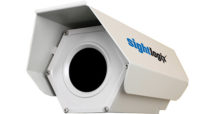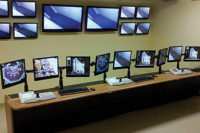Without a doubt, video analytics manufacturers fell into the old “over-promise and under-deliver” trap several years ago. The technology was oversold to end users who wanted the kind of performance out of their systems that they could see on TV. The problem was that no one could deliver that. But a lot of people didn’t want to admit that.
“Early on, analytics was clearly oversold. Now it’s far better than before, but you can’t solve crime like on ‘CSI’ in record time,” says Steve Gorski, general manager of MOBOTIX. “It’s important to set customer expectations about what a camera can do and what it cannot do. If you want to zoom in on a cash register to read the serial numbers on a dollar bill, the camera is not designed for that. The ‘you-see-it-on-TV’ perception is a disservice to us all.”
Today’s analytics are so vastly improved and can provide so much more actionable intelligence than in the past that there’s no reason to exaggerate a system’s capabilities, says Willem Ryan, senior product marketing manager for Bosch Security Systems.
“Analytics provides great security, and there’s also analytics to help business grow. There’s great ROI and value proposition with analytics,” he says. “You shouldn’t be overselling out-of-the-box performance. Because it’s software, because you can make tweaks, it can evolve with the customer and with the application. You shouldn’t say it’s 100 percent accurate. It’s better to say, ‘Analytics can do this, but it’s going to get better over time as we work together.’ So rather than ‘I can solve all your problems,’ tell a customer ‘this is something that can grow with you as your needs change.’”
Learning all the ins and outs of the solutions you’re offering is the best way for integrators to prepare themselves for serving the retail space, says Jackie Andersen, a retail business development manager for Axis Communications.
“It’s best to form partnerships with analytics providers and IP network video manufacturers. They can help provide retail subject matter expertise to the integrator’s retail prospects and provide training to their retail-focused sales force,” she says. “Knowing the language of retail can be the difference between a prospect and a sale.”
To that end, Ryan says a hands-on approach is the best way to really get familiar with analytics.
“Test, test, test and do more testing. Integrators shouldn’t go into a project blind without experiencing analytics themselves,” he says. “Start testing the stated capabilities of each manufacturer’s solutions. Get familiar with the good, the bad and the ugly. Please get yourself trained, then start testing. You should be proactive and start learning more because if you haven’t gotten any experience on something and you respond to a bid and jump into deployment, then that first time can be a real challenge for an integrator.”
When making the case for business-based analytics to a retail customer, it’s the job of an integrator to listen to what it is that the customer wants to get out of their system and then match the analytics to those goals, rather than the other way around, says Hedgie Bartol, another retail business development manager for Axis.
“There are several successful analytics applications out there today, but it is up to the individual retailer to determine the value of the data they are offered. It’s the job of the integrator with their manufacturer partners to help showcase this value — which leads to determining ROI,” he says. “Be the consultant. Learn how systems work together and the data will be of value to the retailer. In surveillance, the key things to think about are, ‘What do you want to see?’ and ‘What do you want to do with what you see?’ With integrated solutions like we’re seeing in retail, the key questions are, ‘What do you want to accomplish?’ and ‘What systems would you like to see work together and be video-enabled?’”
Tying together disparate systems into one integrated solution that provides the information a retailer feels will be most valuable for making decisions that will benefit their business is the biggest opportunity in retail applications of analytics, Bartol says.
“The real hidden gem is the opportunity to be a true integrator. Analytics provide the ability to bring more value to the surveillance system beyond just security video. Utilizing the cross-functionality afforded through intelligent IP cameras and software integration provide data back to the other retail business units who outline what is going on inside the customer’s stores,” he says. “Video context provides actionable data to help make decisions. This allows loss prevention to have tools that drive sales back to the enterprise.”



